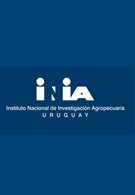ABSTRACT. An efficient method for RNA extraction that leads to RNA high yield and purity is a technical issue relevant for development and optimization of molecular diagnostic methods aimed to detect viroid infections in citrus varieties. Residual contaminants may affect RNA detection depending on the molecular diagnosis approaches. This condition can be evaluated through RNA absorption spectrum analysis. Functionally, it is assessed through observation of RT-PCR amplification products and Northern blot and Dot-blot signal intensities, displaying levels of analytical response/sensitivity. Four RNA extraction methods were evaluated to determine their effects on the capacity to detect viroid CEVd presence/absence in Citrus limon through four molecular diagnostic approaches:1) conventional viroid extraction (CVE); 2) phenol/guanidine thiocyanate (PGT), 3) SDS/potassium acetate (SPA); and 4) formaldehyde/ SSC (FS). Phloem tissue quantifications showed values between 7500 ng/µL and 1200 ng/µL and ranged 1.3-2.0 OD260/280. Evaluations through RT-PCR showed the expected amplifications of the entire CEVd genome, but erratic scenarios still remained. Non-radioactive probe hybridization techniques revealed high intensity signals (132 RU) for infected tissue, by using the CVE method, and a positivity cut-off for the presence of infection was established (78 RU). Nevertheless, molecular hybridization tools can jeopardize the diagnosis due to the thoroughness of the protocol and the RNA template conditions. The diagnostic ability of the association of Northern blot with CVE viroid extraction analyses as starting point was evidenced for successful detection, among the molecular methods tested. RESUMEN. En el desarrollo de metodologías moleculares diagnósticas en variedades cítricas propensas a infección viroide, se precisa la extracción eficiente de ARN, siguiendo criterios de concentración y pureza. Los contaminantes remanentes pueden afectar la detección según la herramienta molecular escogida. Esta condición se analiza a partir del espectro de absorción del ARN; mediante la reacción en cadena de la polimerasa con transcriptasa inversa (RT-PCR) y por los niveles de intensidad de las señales de Northern blot y Dot blot, en términos de respuesta analítica/sensibilidad. Se evaluaron cuatro métodos de extracción de ARN, por sus efectos sobre la detección de presencia/ausencia del Citrus Exocortis Viroid (CEVd) en Citrus limon mediante análisis moleculares diagnósticos:1) extracción viroide convencional (EVC); 2) fenol/tiocianato de guanidina (FTG); 3) SDS/acetato de potasio (SAP); y 4) formaldehído/SSC (FS). Los valores del tejido de floema estuvieron entre 7500 ng/µL y 1200 ng/µL y los rangos entre 1.3 y 2.0 DO

